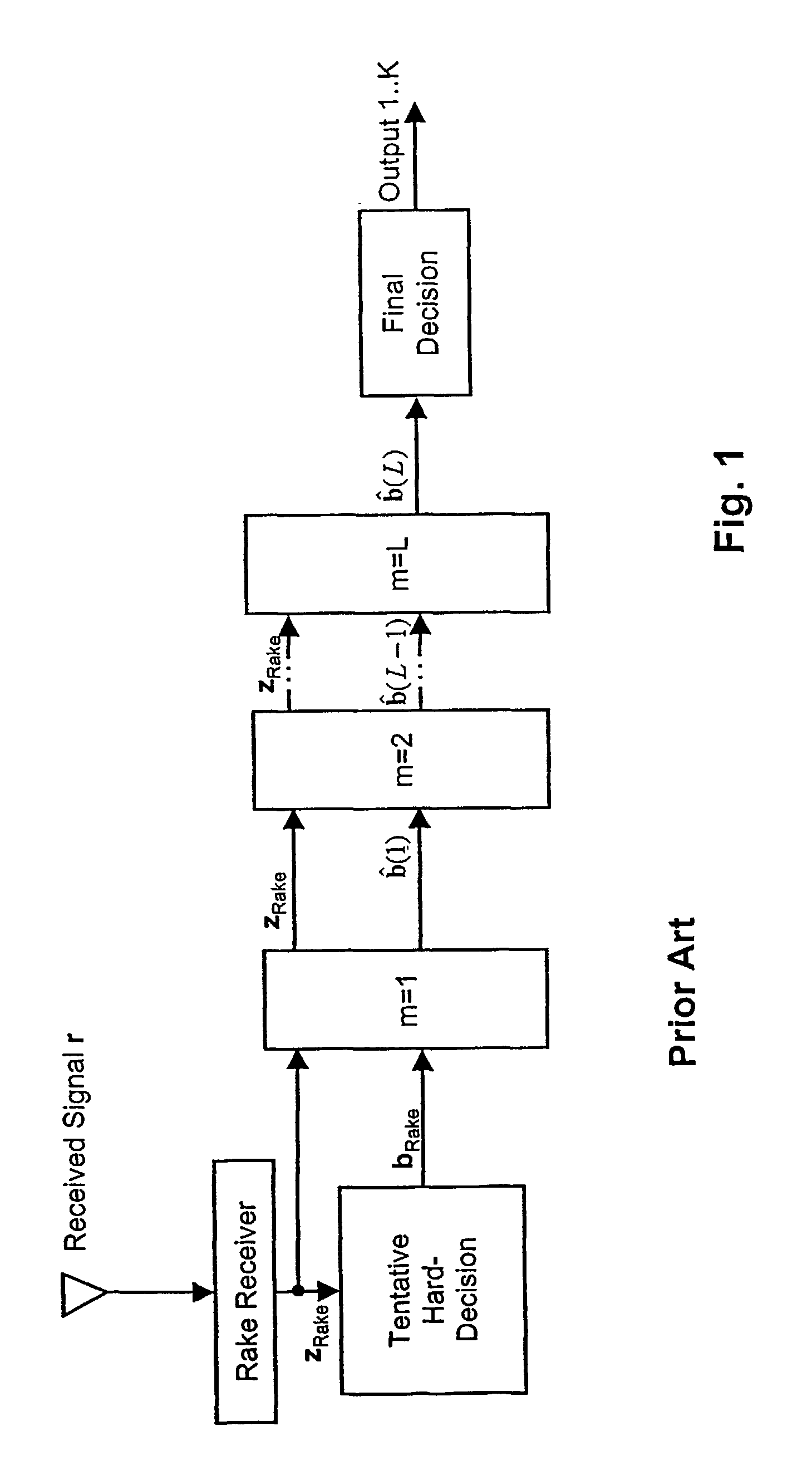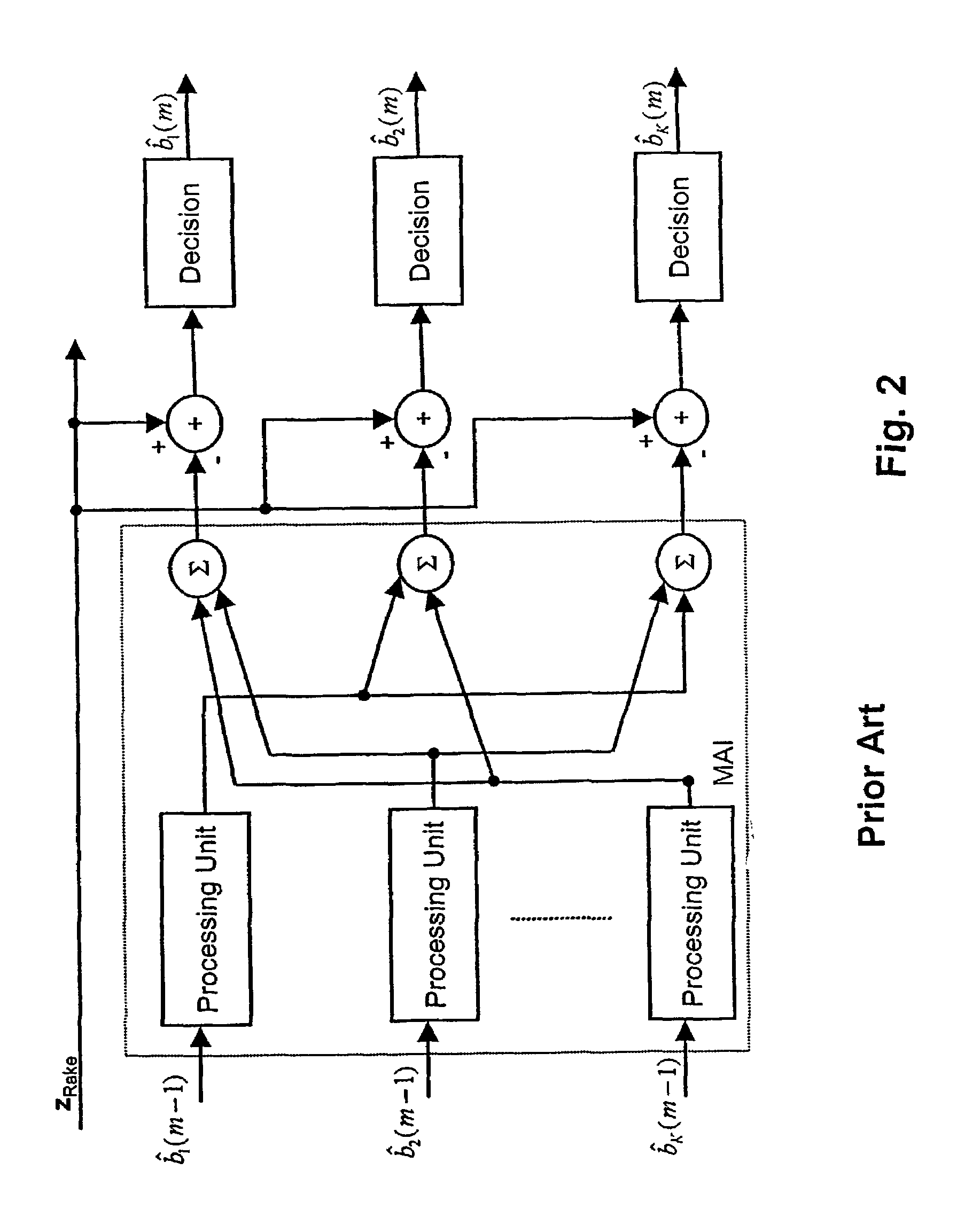Equalized parallel interference cancellation EPIC for CDMA systems
- Summary
- Abstract
- Description
- Claims
- Application Information
AI Technical Summary
Benefits of technology
Problems solved by technology
Method used
Image
Examples
first embodiment
[0083]According to FIG. 4 showing a block diagram of the present invention and a weighting scheme the signal zRake output from the rake receiver is subjected to a tentative hard-decision to obtain hard-decision values bRake in accordance with:[0084][bRake]k=sgn {[zRake]k}, with k=1,2, . . . ,K, k being the user index.
[0085]The hard-decision values bRake are subjected to an MAI regeneration which consists of a parallel interference cancellation in accordance with:[0086]MAI1=FbRake, F=AHSHSA−diag([AHSHSA]ii) off-diagonal cross-correlation matrix.
[0087]The values output by the first MAI regeneration shown in FIG. 4 are subtracted from the rake receiver signal zRake, and the result is subjected to a tentative hard-decision. The signal bPIC output by the tentative hard-decision is determined as follows:
bPIC=sgn[zRake−FbRake].
If [bRake]k=[bPIC]k, these decisions are regarded as highly reliable, and the induced multiple access interference (MAI) is regenerated and fully subtracted from th...
second embodiment
[0096]FIG. 5 shows a flow-chart according to the EPIC detector of the present invention. According to the second and preferred embodiment, the EPIC detector comprises three stages, and the weighting factors of stages 1 to 3 are chosen to ωm=[0.6;0.7;0.9]. bEPIC(m) (m=1,2,3) is calculated according to the following equation:
bEPIC(m)=sgn[zRake−F{circumflex over (b)}k].
[0097]At the first stage, the hard-decision outputs bRake of the rake receiver are compared with the outputs bPIC of the 1-stage PIC detector by a two-bit-comparator, which consists of only 4 logical gates, for each user. If the two signals are equal, {circumflex over (b)}k is set to [bPIC]k. If not, {circumflex over (b)}k is set to 0.2[bPIC]k. The value 0.2=(2ω1−1) is obtained from the weight ω1=0.6 and from the fact that [bRake]k=−[bPIC]k, wherein {circumflex over (b)}k=ω1bPIC+(1−ω1)bRake.
[0098]At the second stage, the hard-decision outputs bEPIC(1) and bPIC are compared by a two-bit-comparator for each user. If the tw...
PUM
 Login to View More
Login to View More Abstract
Description
Claims
Application Information
 Login to View More
Login to View More - R&D
- Intellectual Property
- Life Sciences
- Materials
- Tech Scout
- Unparalleled Data Quality
- Higher Quality Content
- 60% Fewer Hallucinations
Browse by: Latest US Patents, China's latest patents, Technical Efficacy Thesaurus, Application Domain, Technology Topic, Popular Technical Reports.
© 2025 PatSnap. All rights reserved.Legal|Privacy policy|Modern Slavery Act Transparency Statement|Sitemap|About US| Contact US: help@patsnap.com



